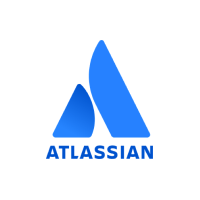Remote PI Planning With Jira Align
The global pandemic has already impacted three different Program Increments for most agile development organizations. How have your teams risen to the challenge of running these large scale planning sessions, such as remote PI Planning, with all or most participants unable to gather together face-to-face? For many, it’s been a real challenge. You’ll be interested to learn, though, that the team behind Atlassian’s Jira Align solution began contemplating remote PI planning long before circumstances made it necessary. And, with Jira Align available for participants, it’s really a straightforward, efficient option that dispersed teams can use to keep moving forward remotely.
Can PI Planning be Done Remotely?
Technically, a PI planning event is described in the SAFe documentation as a “face-to-face” session. However, practically speaking, many larger organizations include developers who are not co-located. And, the cost and logistics required to get everyone together for two days every three months just don’t make sense.
So, many organizations have already been running virtual PI planning events by means of webcams focused on a whiteboard, putting participants in a virtual “big room” where they can all see and participate in the process as if they were physically there.
But, there’s often something missing from that experience: most participants don’t have direct access to the information or context around what’s being presented and displayed at the event’s “home base”. As a result, planning sessions can sometimes run far too long, or the decisions made end up requiring rethinking and reworking down the road. It’s still better than nothing, but not ideal.
What Jira Align brings to the table
Jira Align — the enterprise-level agile planning and tracking solution formerly known as AgileCraft — fills that access gap perfectly. With Jira Align, everyone participating in PI planning has access to all historical data from previous PI’s, as well as broader strategic input from the company’s mission and vision on down. Backlogs and roadmaps offer the raw materials needed to start looking ahead, and hundreds of different views and reports offer the insight needed to make smart decisions.
The end result is a quick, efficient, and ultra-productive remote PI planning session that supports quality work going forward.
Of course, running such an event still isn’t simple and worry-free. There’s a lot of coordination and communication required before and during the event to ensure everyone is able to fully participate and get the most out of it. What follows is a brief summary of the event timeline with suggested best practices and notes on how Jira Align can help.
Remote PI Planning Best Practices
Be flexible
The first key to recognize when preparing for your own remote PI planning event is that it truly is your own. While there are some general tips that are bound to help, it’s important to mold the overall process to fit what’s most effective for your teams and circumstances. For example, while the SAFe-designated PI planning event lasts two days, the team at Atlassian found that three half-days made more sense to accommodate a slightly more focus-friendly schedule and multiple time zones.
Prepare ahead
For a remote PI planning event to run smoothly and accomplish all it needs to, it’s going to require a lot of coordination. Since the Release Train Engineer (RTE), Scrum Master (SM), and others are likely to be relatively inexperienced running online events, doing some dry runs ahead of time is always a good idea.
Gather more help than you think you need
There’s more behind-the-scenes coordination and management required to run a virtual PI planning session, so it makes sense to recruit more people to help with some of the busy work before and during the event. Doing so will allow the main facilitators and participants to focus on their presentations and can keep everything moving smoothly and efficiently.
In addition to the RTE, SMs, Product Owners (POs), Business Owners (BOs), Product Managers (PMs), and System Architects (SAs) who would be facilitating an in-person session, here are four roles you’ll want to fill:
- Proctors – a person who will be in attendance in a breakout room to ensure that all contributors to planning are focusing on the task at hand. It’s best if they are external to the team, and may be worthwhile to use HR managers (with enough prep time) as a way of introducing the values of PI planning and SAFe to them in a new and visceral way.
- Scribes/Researchers – Most organizations use team member volunteers for this critical role to reduce the admin work of the SM and PO.
- Runners – people who will jump from room to room and carry messages and requests for the SM and PO when possible, and can be in-the-moment volunteers.
- Moderators – people who monitor the main chat channels and ensure that polls are run, questions answered, and messages passed to rooms or individuals – proctors, scribes, and runners work with moderators to help with the flow of communications.
Choose the right conferencing solution
The centerpiece of your event is your video conferencing system. For an effective PI planning session, the following features will prove indispensable:
- Breakout rooms – the ability to send participants to smaller private conference rooms that are preassigned, then bring them back together in the main conference room as needed. This allows for teams to do their own planning and discussions when needed without each team needing to handle administration.
- One-on-one and group chat – a place for individuals and small groups to share thoughts and insights regarding what’s being discussed without interrupting or distracting the whole group. This promotes freeform discussion and speeds decision-making, akin to whispering to the coworker sitting next to you.
- Polls – the ability to get immediate feedback from participants. This greatly improves engagement in what could otherwise be long periods of sitting and listening, and it can accelerate alignment and decision making.
If your company’s version of Zoom, Microsoft Teams, or another system doesn’t include all these features, you should consider supplementing with one or more additional tools to fill the gap.
As noted above, a universally-accessible agile project management solution is also vital. Jira Align fills that role perfectly.
How Jira Align Can Help
In the following table, we break down a generic timeline for the standard two-day PI planning event in the order in which you’ll likely proceed. Again, adjustments to fit your needs are appropriate.
Each section’s basic process is described as it can be handled remotely along with the roles needed to facilitate that item. In the last column, we’ve listed various Jira Align modules, reports, and views that will be helpful and/or vital to the process. Click the links to learn more about each of these.
| Agenda Item Day 1 | Facilitation Roles Needed | Remote Processes | Jira Align Tools that Support this Effort |
|---|---|---|---|
| Business context |
|
A Business Owner or senior executive describes the current state of the business, shares the Portfolio Vision, and presents a perspective on how effectively existing solutions are addressing current customer needs | |
| Product / solution vision |
|
Product Management presents the current vision (typically represented by the next top 10 upcoming features) and highlights any changes from the previous PI planning meeting, as well as any forthcoming Milestones | |
| Architecture vision and development practices |
|
System Architect/Engineering presents the architecture vision. Also, a senior development manager may introduce Agile-supportive changes to development practices, such as test automation, DevOps, Continuous Integration, and Continuous Deployment, which are being advanced in the upcoming PI | |
| Planning context and lunch |
|
The RTE presents the planning process and expected outcomes of the meeting | |
| Team breakouts #1 |
|
In the breakout, teams estimate their capacity for each Iteration and identify the backlog items they will likely need to realize the features. Each team creates their draft plans, visible to all, iteration by iteration
During this process, teams identify risks and dependencies and draft their initial team PI objectives. The PI objectives typically include ‘uncommitted objectives,’ which are goals built into the plan (e.g., stories that have been defined and included for these objectives), but are not committed to by the team because of too many unknowns or risks. Uncommitted objectives are not extra things to do in case there is time. Instead, they increase the reliability of the plan and give management an early warning of goals that the ART may not be able to deliver. The teams also add the features and associated dependencies to the program board |
|
| Draft plan review |
|
During the tightly timeboxed draft plan review, teams present key planning outputs, which include capacity and load, draft PI objectives, potential risks, and dependencies. Business Owners, Product Management, and other teams and stakeholders review and provide input. | |
| Management review and problem solving |
|
It’s likely that the draft plans present challenges such as scope, people and resource constraints, and dependencies. During the problem-solving meeting, management may negotiate scope changes and resolve other problems by agreeing to various planning adjustments. The RTE facilitates and keeps the primary stakeholders together for as long as necessary to make the decisions needed to reach achievable objectives
In multi-ART Solution Trains, a similar meeting may be held after the first day of planning to resolve cross-ART issues that have come up. Alternatively, the RTEs of the involved trains may talk with each other to raise issues that are then resolved in each ART’s specific management review and problem-solving meeting. The Solution Train Engineer (STE) helps facilitate and resolve issues across the ARTs./td> | |
| Agenda Item Day 2 | Facilitation Roles Needed | Remote Processes | Jira Align Supports |
| Planning adjustments |
|
The next day, the event begins with management presenting any changes to planning scope, people, and resources |
|
| Team breakouts #2 |
|
Teams continue planning based on their agenda from the previous day, making the appropriate adjustments. They finalize their objectives for the PI, to which the Business Owners assign business value, as shown in | |
| Final plan review and lunch |
|
During this session, all teams present their plans to the group. At the end of each team’s time slot, the team states their risks and impediments and provides the risks to the RTE for use later in the ROAMing exercise. The team then asks the Business Owners if the plan is acceptable. If the plan is accepted the team brings their team PI objective sheet to the front of the room so everyone can see the aggregate objectives unfold in real-time. If the Business Owners have concerns, teams are given the opportunity to adjust the plan as needed to address the issues identified. The team then presents their revised plan | |
| Program risks |
|
During planning, teams have identified program risks and impediments that could impact their ability to meet their objectives. These are resolved in a broader management context in front of the whole train. One by one, the risks are discussed and addressed with honesty and transparency, and then categorized into one of the following categories:
|
To learn more about Jira Align and how you can use it to upgrade your entire agile experience, check out these great resources:
- Free Jira Align webinar series
- In-depth training to implement SAFe using Jira Align
- Custom Jira Align consulting and coaching



